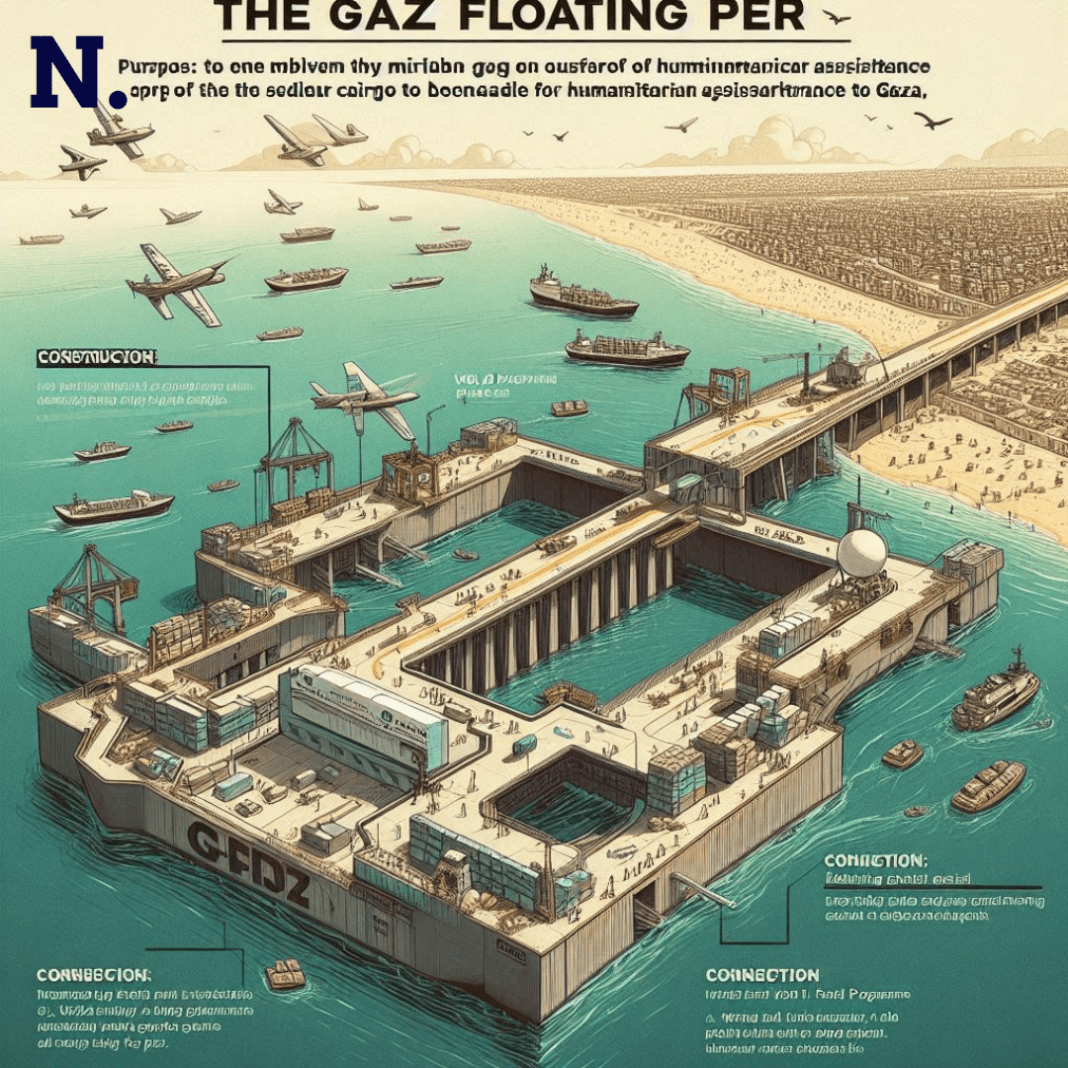It was a rare sight in the eastern Mediterranean Sea: U.S. Army personnel traveling on a military vessel to the newly constructed floating pier. Situated offshore of the Gaza Strip in the territory to inspect. The visit took place on Tuesday and marked the resumption of operations. On the $230 million worth pier, brought to a standstill due to rough seas. This pier intends to simplify the posing of humanitarian aid, but it has faced challenges in its journey.
From their vantage on the floating platform, they could see entire neighborhoods in ruins. Another clear indication of the ongoing devastation within the Gaza Strip. However, destruction inside this jam-packed Palestinian territory. Remained closed to journalists, reflective of that restricted access imposed by the conflict.
Challenges in Humanitarian Aid Delivery to Gaza
President Biden announced plans to improve the delivery of humanitarian assistance. For hundreds of thousands of Palestinians in dire need Through the pier project. Now entering its 10th month, the war of Israel against Hamas has made the question of aid increasingly urgent. None of the U.S. troops working to build and man the pier have set foot inside the Gaza Strip. However, underlining how convoluted and precarious the mission was.
The pier itself, which shakes and clangs even in calm seas, has had limited operational success. Since its inauguration, it has been fully operational for only some 16 days. Mostly because of weather conditions that once left a part of the pier beached. Operational setbacks have sparked concerns after Israeli forces. Carried out an operation in Gaza earlier this month with heavy losses.
That incident has drawn scrutiny to the pier project, with the U.N.’s World Food Program. Suspending operations over fears that the project’s security compromised. “This is a humanitarian pier,” stated Colonel Samuel Miller, commander of the U.S. Army’s 7th Transportation Brigade, reinforcing that the pier was not part of any military operation. Despite tribulations, Col. Miller remained focused on his mission to deliver humanitarian aid.
Gaza’s Aid Delivery Crisis: Logistical Challenges
The logistical challenges are apparent. Trucks loaded with food aid are making their way into Gaza, but the numbers fall far short of the need. Since this project became operational two months ago, only about 400 aid trucks have crossed the pier. This is a far cry from the pre-October 7 scenario, where more than 500 truckloads of aid. Would make their way into Gaza every day. The scale is huge: more than half of Gaza’s population of 2.3 million. Displaced from their homes, many of them multiple times.
Its infrastructure is in a shambles. Heavily hit or demolished were hospitals, bakeries, and schools, mostly in the northern part of the territory. Furthest from the entry points of aid. Food is in short supply, and the U.N.’s Food and Agriculture Organization warned. That the risk of famine was high throughout Gaza unless aid deliveries increased.
Colonel Miller’s Mission: Delivering Aid
Colonel Miller’s goal is pretty simple: to dole out as much aid as possible to the beleaguered citizens of Gaza. But the road ahead won’t be easy. Israel tightened its borders after Hamas attacked on October 7, killing over 1,200 Israelis and kidnapping more than 240. Both Israel and Egypt maintained this policy, allowing only a few international journalists into Gaza. The conflict has taken more than 37,400 lives so far, the vast majority of them women and children. The health ministry is quoting under Hamas leadership, Gaza.
With the humanitarian crisis deepening every day, it will be increasingly important for the international community. To wrestle with how exactly to delivery aid in times of conflict. The floating pier, though, symbolizes the broader struggle of bringing relief amidst a war-torn region. The resilience of those involved with aid efforts and dire needs. Of the Palestinian population underline the urge for finding a lasting solution to the continuing crisis in Gaza.
Even amidst all bloodshed, the commitment to humanitarian aid had never been stronger. The question is, will it prove enough to save lives from excruciating pain and prevent impending famine? A worldwide audience watches, pleading for someone to find a solution. As the bestial tragedy unfolds in Gaza and the battle is avoided.





